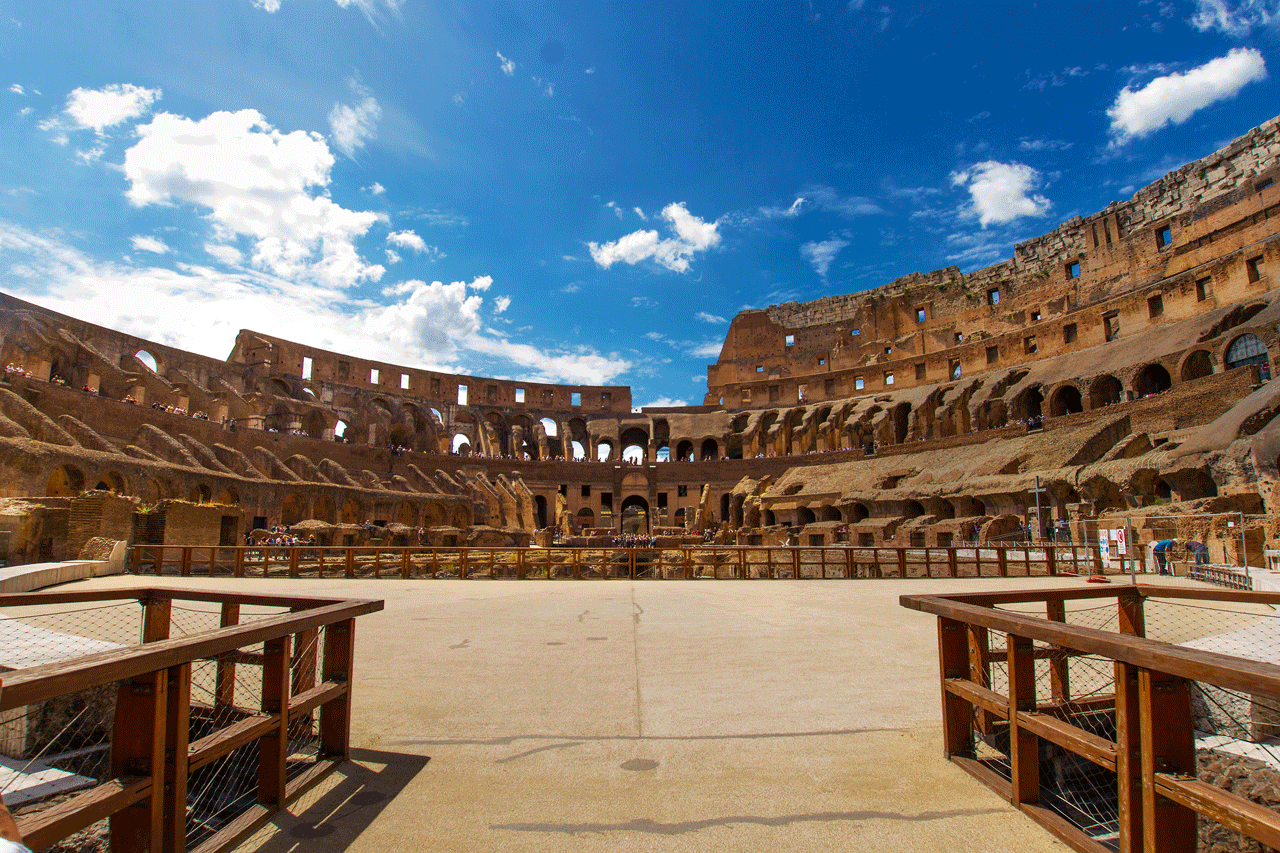There is much we know about the Colosseum. It is the largest amphitheater in the world and was home to gladiatorial battles and brutal forms of entertainment for hundreds of years. However there are some lesser-known secrets of the Colosseum- here are just some of those that we share on our tours:
The Colosseum staged gladiatorial games and battles for hundreds of years.
These games were a way for the Roman Emperors to gain favor with the masses, or indeed to distract the masses from any negative news. Crowds were treated to ‘entertainment’ and given free food, and prizes like money or titles to houses and property.
The Colosseum’s Gladiatorial battles had a brutal reputation, however, they did not always end in death.
Gladiators were expensive commodities to keep. They needed to be well fed to maintain their fitness. They often needed medical attention. They were housed in barrack style accommodation. All this cost soon added up, so owners did not want to lose them. Therefore, gladiatorial battles sometimes ended with a pardon, or escape, as opposed to death.
However, this was not always the case for wild animals.
Over the course of its use, the Colosseum witnessed the deaths of potentially millions of wild animals. Animals battled against other animals or were hunted inside the Colosseum.
Over 5 million people come to visit the Colosseum per year.
At the height of its use, the Colosseum held around 50,000 people.
The seating plan was arranged according to everyone’s place in society.
Women and slaves sat high up inside the structure. The area around the floor was reserved for senators of Rome.
When times changed and the Colosseum was no longer used, the Catholic Church used the structure as a quarry for stone for buildings like St. Peter’s Basilica.
This practice did not stop until the 18th Century.
As legend would have it, the Colosseum is known as the seventh gate into hell.
What is more, the same legend tells us that angry souls haunt the Colosseum at night, seeking retribution for their death.
When gladiators or others did die in the Colosseum, there was someone there dressed as Charon.
Charon was known as the ferryman of the souls and the character dressed like him would remove the deceased.
The last gladiatorial battles took place in the 6th Century and the Colosseum fell into disrepair.
It was also badly affected by an earthquake. This mainly affected the rear of the building – at the south side. It was lying upon the less stable ground.
The earthquake, which collapsed the southern wall, took place in 1349. The stones that fell were used to build palaces and churches elsewhere.
After falling into disrepair, a Pope in the late 16th Century wanted to turn the Colosseum into a wool factory.
His intention was the give work to Rome’s prostitutes, but the plan was too costly and didn’t go ahead.
Today the Colosseum has its very own microclimate inside.
There are over 300 species of plants thriving inside. As early as the 17th Century, the Colosseum became a popular location for botanists who began to study plant life.
Why tour the Colosseum with us?
Here at Colosseum and Vatican Tours, we know this site like the back of our hand. We offer insider tours of Rome that you can trust and we’ll tell you all the secrets of the Colosseum that we know, just like we did for Ian and his family from Melbourne who said (via TripAdvisor):
“This is definitely the way to really unlock all the secrets of both sites and gain a greater understanding of what went on in ancient Roman times. I would highly recommend spending the money; we booked online, which was easy.”
You can hop over to our TripAdvisor page to find out what our previous guests say about our tours of Rome. You can find more reviews and travel inspiration on our Facebook and Twitter pages, also. Alternatively, get in touch with us direct – details on our website.
We look forward to showing you around!


